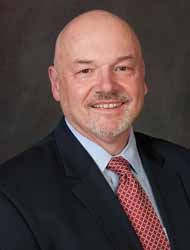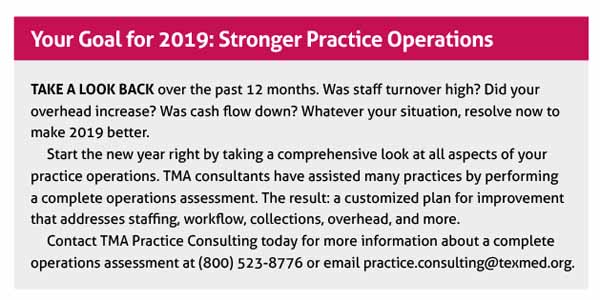
When Austin Regional Clinic (ARC) went looking for an investor to help the large group change its payment model in 2016, the practice had a lot going for it: more than 300 physicians, a patient base of 450,000, and a strong financial track record.
Despite these advantages, ARC quickly found that the pool of potential investors resembled a bad dating scene. Lots of investors wanted to woo ARC, but most of them were either too controlling or just didn’t share ARC’s vision.
“We had to kiss a lot of frogs to find the right [investor],” ARC Chief Medical Officer Jay Zdunek, DO, told a crowded room at the Dawn Duster presentation on venture capital in medicine at the Texas Medical Association’s 2018 Fall Conference in September.
But better to kiss a lot of frogs than to settle for the first one that comes along, Dr. Zdunek says. That unfortunately is a common experience for physicians and physician groups looking to line up venture capital. It’s easy for medical practices to be tempted by business agreements that appear lucrative in the short term, without realizing the extent to which they may sacrifice long-term independence, he warns.
That’s especially true for physician groups with an increasing financial burden. Many practices urgently need to acquire more capital because operating costs have been on a steep rise since 2001 while Medicare payments — which set the pace for commercial payers — have not kept up with practice expenses, says Dr. Zdunek, who also has a master’s degree in business administration.
The need for outside capital “is not unique to Texas. I have not met a physician group that has not been struggling with this for some period of time,” he told Texas Medicine in a separate interview.
There are many types of investors, including private investors, hospital groups, and insurance companies. Most of them look to buy or control practices to create broader networks, says Kevin Wood, a lawyer with the Austin law firm Clark Hill Strasburger who specializes in business deals for health care organizations and who also spoke at Fall Conference.
Physician practices in general are hot investments, but some specialties are hotter than others. The most popular are dermatology, ophthalmology, orthopedics, gastroenterology, and urology, according to Becker’s ASC Review, an online health care business publication. Each specialty is popular for different reasons, but many tie back to the United States’ rapidly aging population and expectations for increasing health care demands. Transactions involving dermatology practices alone rose about 46 percent between 2016 and 2017, according to Irving Levin Associates, a publisher of investor newsletters.
Before beginning an investor search, physicians should have a clear idea of what they want out of the deal, Mr. Wood says. They also should focus on how any agreement will affect their organizational structure, governance rights, and contract rights. Because once everything is signed, it will be too late for second-guessing.
“Knowing who you are and where you want to go are the key pieces,” he said. “What you do with your partner and what you do going forward is going to be key. You want to make sure the culture of who you’re partnering with marries up with the culture of your practice.”
Who needs capital?
The past 40 years have brought several waves of financial consolidation and increased investment activity among physician practices, Mr. Wood says. These waves typically occur because some regulatory shift makes practicing medicine more expensive or changes payment.
In the 1980s, major changes in Medicare payment prompted consolidation; in the 1990s, it was the advent of health maintenance organizations. In both cases, hospitals typically bought out or partnered with physician practices. The latest round, triggered by federal health care reforms under President Barack Obama, prompted more private investors to buy or partner with physician practices.
For instance, the American Recovery and Reinvestment Act of 2009 mandated the use of electronic health records (EHRs). The transition cost practices on average $80,000 to $85,000 per physician upfront, plus maintenance fees, says Dr. Zdunek. It also slowed physicians’ productivity because their workload increased.
Given these and other changes, some practices need investment capital just to keep up with normal expenses, Dr. Zdunek says. Others might try to upgrade their quality reporting tools to comply with the Medicare Access and CHIP Reauthorization Act (MACRA) and its Merit-Based Incentive Payment System (MIPS). (See www.texmed.org/MACRA and “The Results Are In: Physicians Finally See How They Fared In First Year of MIPS,” September 2018 Texas Medicine, pages 36-39, www.texmed.org/FirstYearMIPS.)
Practices looking to expand also face significant costs. At ARC, hiring just one physician runs anywhere from $250,000 to $500,000 in the first year of employment when counting the costs of recruitment, salary, benefits, support staff, and other related expenses, Dr. Zdunek says. That new physician, in time, will make money for the practice, but the upfront costs must be met first.
Most investors are looking to buy physician practices outright, and most of these purchasers are hospital groups or insurance companies.
In 2016, about 42 percent of U.S. physicians worked for hospitals, up from about 26 percent in 2012, according to health care consulting firm Avalere Health. Not all of this physician employment is a result of acquisitions, but hospitals have been aggressive buyers of medical practices, Mr. Wood told Texas Medicine in a separate interview.
Another aggressive investor is OptumCare, a subsidiary of UnitedHealth Group, the biggest U.S. health insurer. It’s most recent blockbuster deal came in 2017 with the purchase of DaVita Medical Group, which employed 17,000 physicians. But its own website makes clear it is on the lookout to buy out or partner with physician groups. Even before the DaVita purchase, OptumCare had employed or partnered with 30,000 physicians across the country, compared with the 37,000 working for HCA Healthcare Inc., the largest for-profit U.S. hospital system, according to Bloomberg.
Texas can be a more difficult investment market because it has strict “corporate practice of medicine” laws, which, among other things, forbid businesses from practicing medicine or employing physicians to provide medical services here, Mr. Wood says. (See “Corporate Encroachment,” July 2018 Texas Medicine, pages 36-41, www.texmed.org/CorporateEncroachment.) The laws are designed to preserve doctors’ independent medical judgment. However, certain legal agreements can give nonphysicians effective control over physician practices, and that frequently happens when doctors don’t guard their rights to make practice-related decisions, says Mr. Wood.
“When [capital groups] are throwing around their money they expect to have the control,” Mr. Wood said. “It’s a rare instance where the physician group maintains total control or even majority control. For decisions that you’re making, be sure that the physician group keeps a seat at the table,” even after negotiations end.
Getting to yes
 Having clear goals is key, Dr. Zdunek says. For instance, a practice made up of older physicians may be more interested in maximizing financial return so those physicians can retire sooner; maintaining self-governance might be less important. A practice of younger physicians might want to guard self-governance and instead give in on cash value.
Having clear goals is key, Dr. Zdunek says. For instance, a practice made up of older physicians may be more interested in maximizing financial return so those physicians can retire sooner; maintaining self-governance might be less important. A practice of younger physicians might want to guard self-governance and instead give in on cash value.
Practices that give up too much control can quickly find investors dictating medical policy, Mr. Wood warns. In some cases he’s represented and researched, the physicians thought they’d found an investor who respected their independence, but that investor turned around and sold the practice to a third party. The physicians had no say in the new arrangement.
The most successful business deals he’s seen are ones where physicians held firm on what they wanted and actively negotiated to maintain their independence.
“[Investors] are coming to you for a reason,” he said. “Whatever size group, whatever size market, whatever size patient base you have, you’re the one bringing value to the table. The key to remember in those negotiations is — that’s why you’re there. … If [the proposed deal] is not what you want, it’s OK to walk away from the negotiations.”
In 2016, ARC did just that. The practice made the strategic decision to switch from fee-for-service payments to global capitation with Medicare Advantage plans, which entails a fixed per-patient (or “capitated”) payment for all care as an incentive for the practice to control costs.
To transition, ARC needed a large influx of capital to brace for longer patient appointments and administrative changes under the new payment model. Its physicians were determined to preserve their independence, so finding the right investor was difficult, Dr. Zdunek says. One investor waited until late in the negotiations to inform ARC that it wanted total control of the practice in order to invest, apparently assuming the doctors would cave in to this demand. Instead, ARC turned them down. But that meant ARC had to start over in its investor search.
“I got to tell you — there are a lot of people who want to talk to you, but there aren’t a lot who want to give you the things that you want,” Dr. Zdunek said. “It’s a labor-intensive endeavor looking for that right partner.”
At roughly the same time, Premier Family Physicians, an Austin practice of about 30 physicians and a 90,000 patient base, also was looking for investment money to hire more physicians to make the switch to a capitation payment model. Unlike ARC, Premier was willing to consider a buyout, but it ultimately decided that remaining independent made better business sense, says Kevin Spencer, MD, Premier’s CEO.
Eventually, ARC and Premier found the right partner in Agilon Health. The company boosts practices with the technology and funding to switch to global capitation. Its business model is to partner with, not buy, medical practices, says Ravi Sachdev, a partner at Clayton, Dubilier and Rice, the private equity firm that owns Agilon.
“The future is letting physicians remain independent, maintain their culture, maintain their brand, maintain their relationship as a group,” Mr. Sachdev told Texas Medicine. He acknowledges the approach does not work for all practices. “In a partnership, you don’t have control. It’s about trust. It’s about transparency. It’s about shared decisionmaking.”
ARC, Premier, and Agilon created a three-way partnership in which the two practices get 50-percent control and Agilon gets 50 percent. The arrangement covers only Medicare Advantage patients, which make up a minority of both practices’ patient base — about 20,000 out of 540,000 total, Dr. Spencer says.
Agilon’s desire to partner with doctors is unusual for an investor, Dr. Spencer says. It allows physicians to participate fully in the financial side while being left alone to practice medicine.
“We don’t think independence exists in the real world,” he said. “You need to be interdependent with the right people.”
Dr. Zdunek says he understands physicians’ resistance to outside authority. The appeal of being a doctor traditionally has been working in a small business and controlling your own destiny. But the economic pressures physicians face today make that increasingly difficult.
“As an independent physician group or an independent physician, you’re constantly trying to play in a land of giants and not get squashed,” he said. “The only way you can do that sometimes is to find outside capital.”

Tex Med. 2018;114(12):22-25
December 2018 Texas Medicine Contents
Texas Medicine Main Page